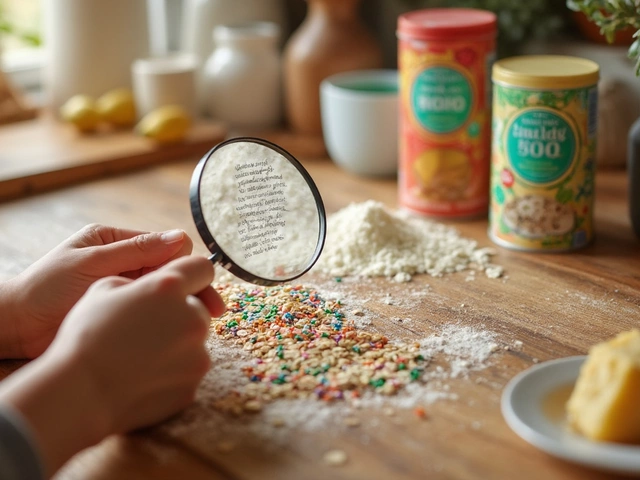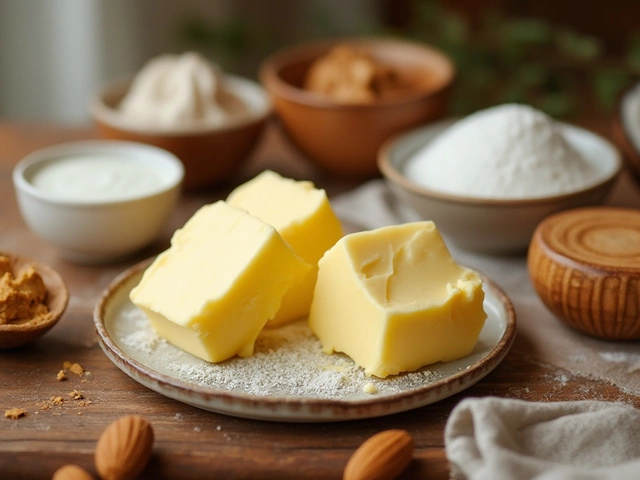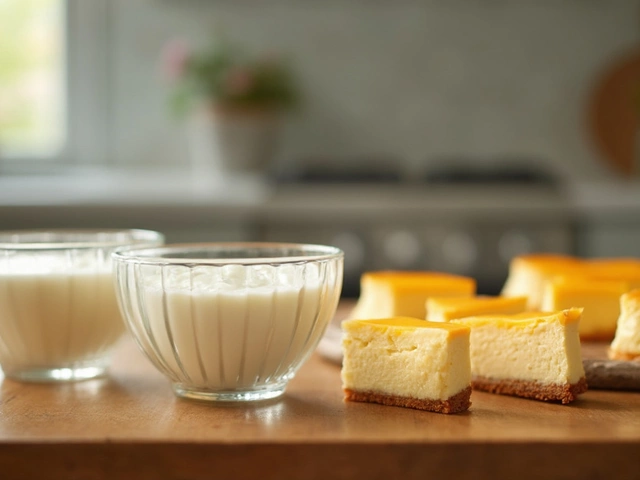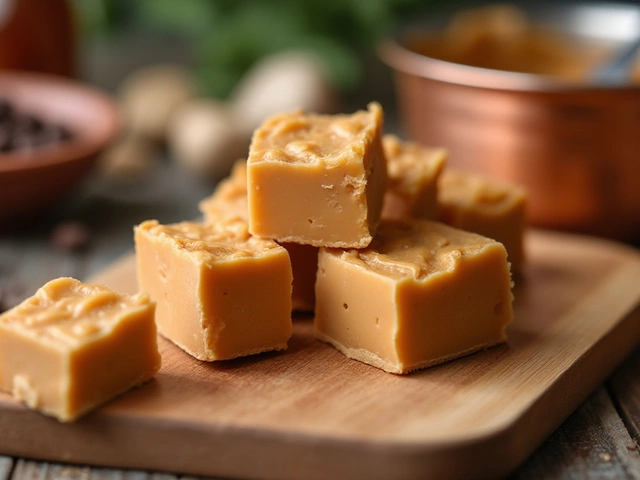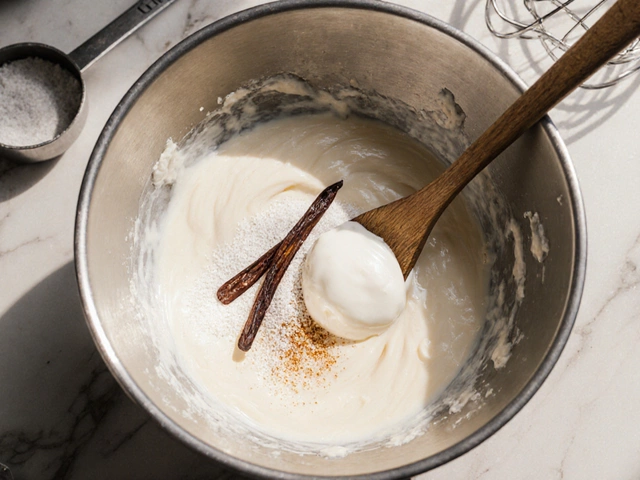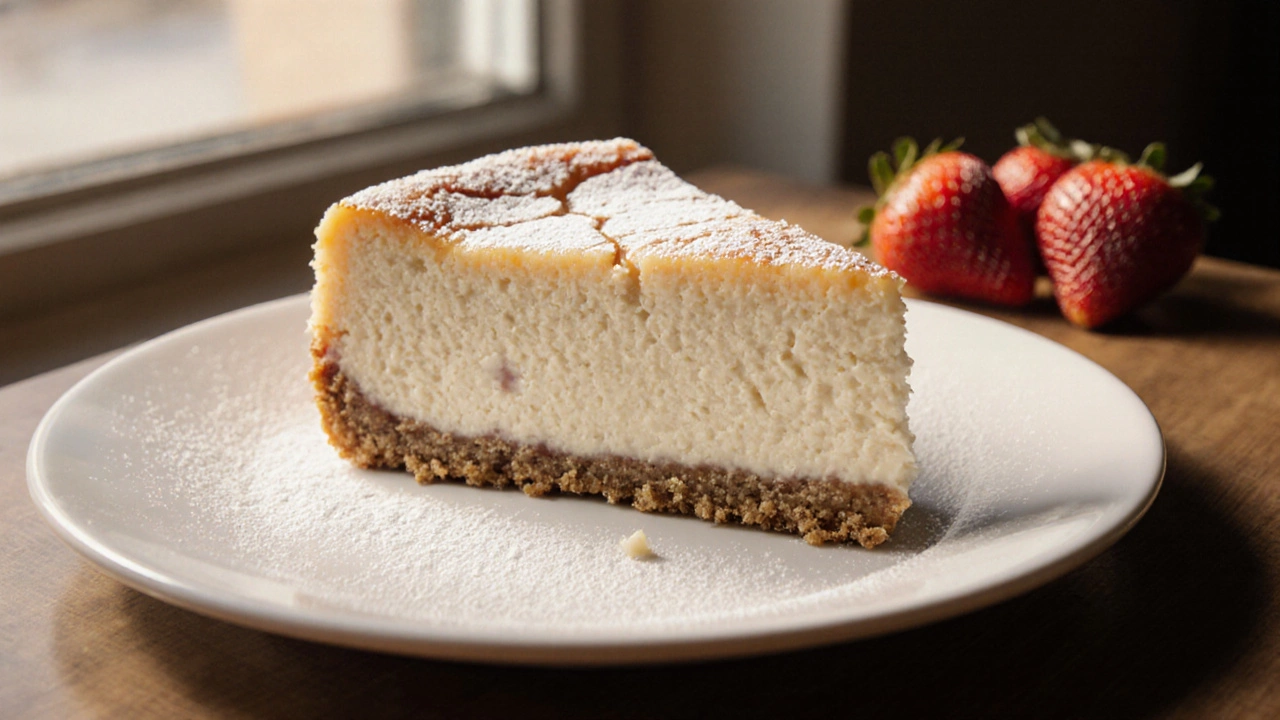
New York Cheesecake Calculator
Cheesecake Calculator
Required Ingredients
Always bake in water bath to prevent cracks.
Recommended: Chill for 4+ hours before serving.
Key Takeaways
- New York cheesecake’s signature density comes from a high ratio of cream cheese to eggs.
- The crust’s crunch is all about the right blend of graham crackers, butter, and a pinch of sugar.
- Baking it in a water bath (bain‑marie) prevents cracks and keeps the texture silky.
- Adding sour cream or heavy cream at the end creates that subtle tang and extra creaminess.
- Small tweaks-like a dash of vanilla or a sprinkle of flour-make a world of difference.
When it comes to indulgent desserts, New York cheesecake is a dense, creamy cake made with cream cheese, a crumbly crust, and often a sour‑cream topping. It’s the kind of dessert that can turn an ordinary dinner into a celebration. But why does it stand out from the dozens of cheesecake variations around the globe? The answer lies in a handful of ingredients, a precise baking technique, and a little bit of culinary science.
What Makes the Texture So Distinct?
The hallmark of a true New York cheesecake is its luscious density. While a light, airy cheesecake feels almost like a mousse, the New York style feels like a custard that’s been pressed into a solid, buttery form. Two factors drive that texture:
- Ingredient ratios. A classic recipe uses roughly 24 oz of cream cheese for every 2 large eggs. The high fat content of cream cheese (about 33 % butterfat) gives the cake its rich mouthfeel.
- Limited leavening. Unlike some European cheesecakes that rely on whipped egg whites or gelatin, the New York version uses just a pinch of baking soda. This tiny amount adds just enough lift to keep the center from turning rubbery without lightening the structure.
When you combine these ratios with a short baking time in a moderate oven (325 °F/160 °C), the proteins in the cream cheese coagulate gently, creating that velvety, almost melt‑in‑your‑mouth sensation.
The Role of the Crust
Every great New York cheesecake rests on a sturdy base. The classic crust blends graham cracker crumbs, melted butter, and a spoonful of brown sugar. Here’s why each component matters:
- Graham crackers bring a sweet, honey‑laden flavor and a fine crumb that binds well when wet.
- Butter acts as the glue, creating a compact matrix that stays firm after cooling.
- Brown sugar adds a subtle caramel note, complementing the tang of the cheese.
Press the mixture evenly into the bottom of a springform pan and bake it for just 8‑10 minutes. This pre‑bake dries the crust just enough to avoid sogginess while still letting it stay tender.
Why the Water Bath (Bain‑Marie) Matters
One of the most common mistakes home bakers make is to slide the cheesecake straight into a dry oven. The result? Cracks, uneven coloring, and a dry edge. The water bath solves all three problems.
- It creates a humid environment, which slows down the outer layer’s heat exposure.
- The gentle steam circulates heat evenly, reducing the risk of a sudden temperature shock that would split the top.
- Any excess moisture seeps into the batter, keeping it supple and preventing a rubbery finish.
To set up a water bath, wrap the springform pan in a double layer of heavy-duty aluminium foil, place it inside a larger roasting pan, and pour hot water until it reaches halfway up the sides of the cheesecake pan. Bake as directed, then let the cheesecake cool in the oven with the door ajar for 1 hour before moving it to the fridge.
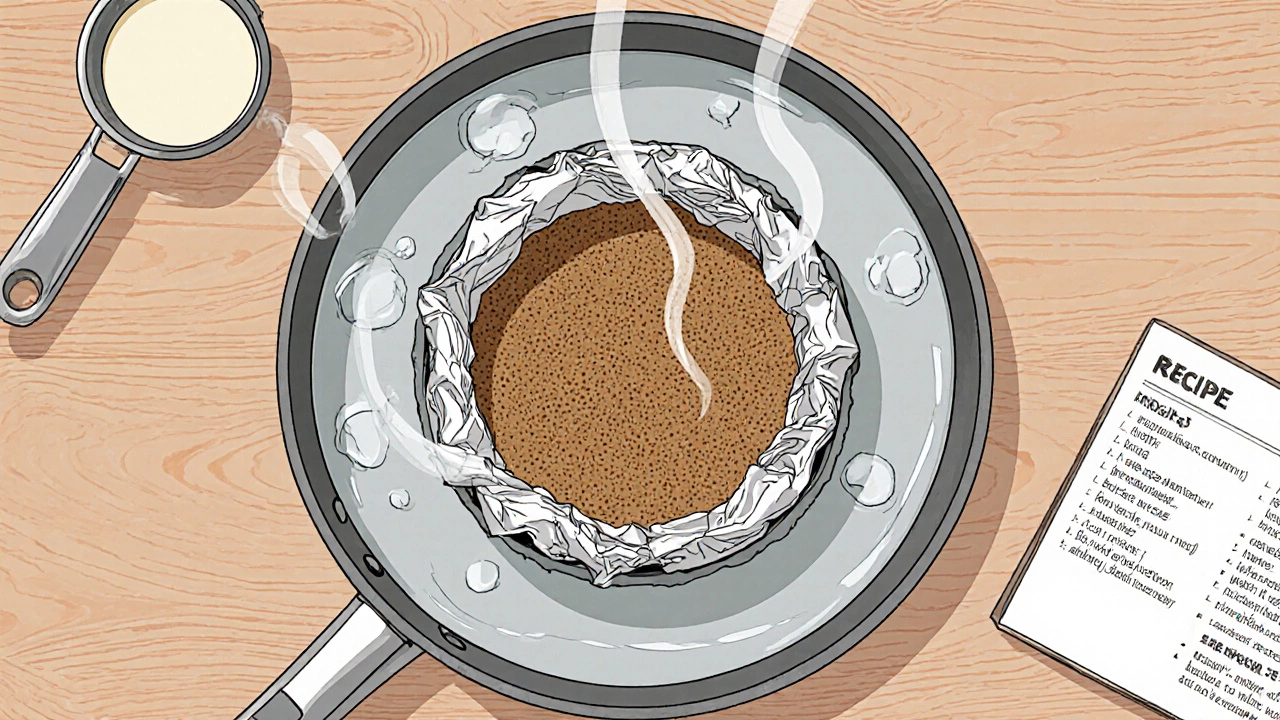
Flavor Boosters: Sour Cream, Heavy Cream, and Vanilla
While the base cheesecake mixture already packs a punch, professional bakers often fold in sour cream or heavy cream after the initial bake. These ingredients add two crucial qualities:
- Tang. Sour cream’s lactic acidity cuts through the richness, making each bite feel lighter.
- Creaminess. Heavy cream raises the fat content just enough to smooth any grainy texture.
Don’t forget a splash of vanilla extract. A genuine vanilla bean or high‑quality extract adds depth without overwhelming the cheese’s flavor.
Common Pitfalls and How to Avoid Them
Even seasoned bakers run into trouble sometimes. Below are the most frequent issues and quick fixes:
| Problem | Cause | Solution |
|---|---|---|
| Cracks on top | Dry oven or sudden temperature drop | Use a water bath, cool gradually |
| Watery center | d>Undercooked batterIncrease bake time by 5 minutes, check with a knife | |
| Grainy texture | Low‑fat cream cheese or over‑mixing | Use full‑fat Philadelphia cream cheese, mix just until smooth |
| Crust soggy | Skipping pre‑bake or using too much butter | Bake crust 8‑10 min; keep butter to 1/4 cup |
Step‑by‑Step Recipe (Classic New York Style)
- Preheat oven to 325 °F (160 °C). Grease a 9‑inch springform pan.
- Crust: Pulse 1 ½ cups graham cracker crumbs with ¼ cup melted butter and 2 Tbsp brown sugar. Press into the pan. Bake 8 min, then set aside.
- Filling: Beat 24 oz full‑fat cream cheese until smooth. Add 1 cup granulated sugar, 1 tsp vanilla, 1 Tbsp flour (helps prevent cracks). Mix in 3 large eggs one at a time, then ½ cup sour cream.
- Pour filling over the baked crust. Wrap pan in foil, place in a larger roasting pan, and add hot water to halfway up the sides.
- Bake 55‑60 min. The center should jiggle slightly when you shake the pan.
- Turn off oven, crack the door, let cheesecake sit 1 hour. Then chill in the fridge for at least 4 hours or overnight.
- Optional topping: Mix 1 cup sour cream, 2 Tbsp sugar, 1 tsp vanilla. Spread over the chilled cake and return to fridge for 30 min before serving.
Serve with fresh berries, a drizzle of chocolate, or a simple dusting of powdered sugar. The key is to let the flavors speak for themselves.
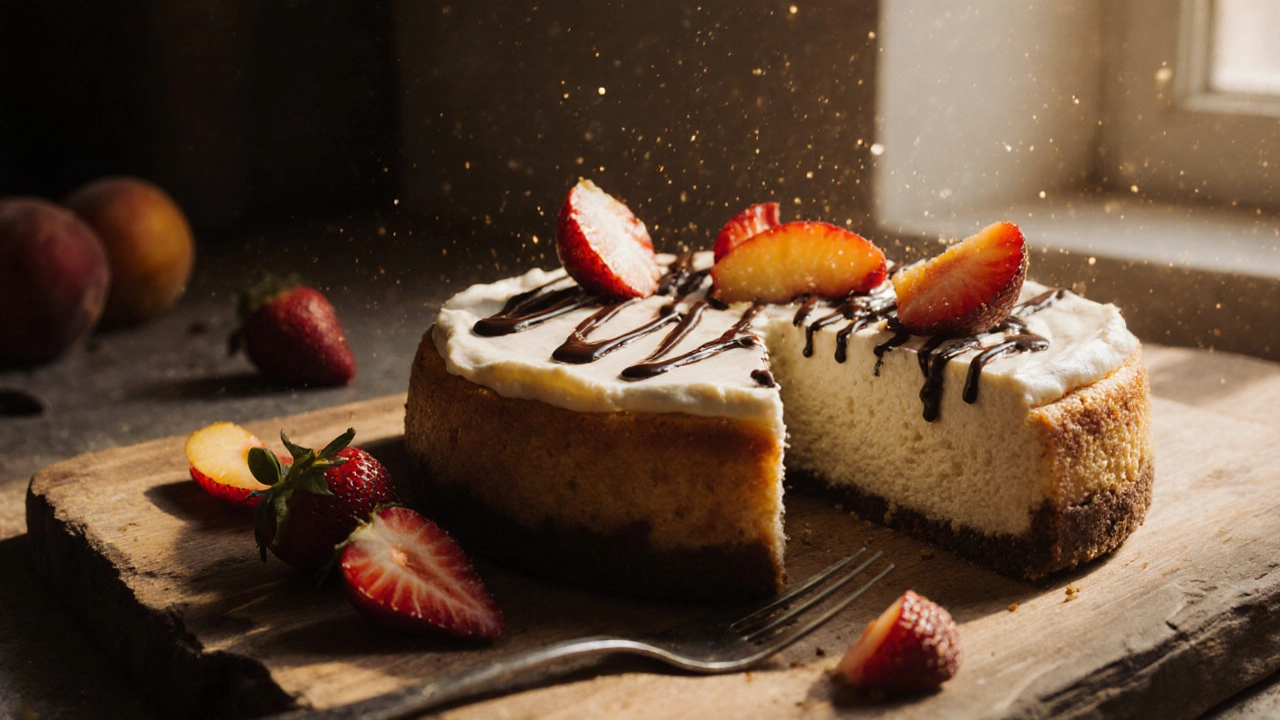
Variations Worth Trying
If you want to experiment beyond the classic, consider these tweaks:
- Ricotta cheesecake. Substitute half the cream cheese with ricotta cheese for a lighter, slightly grainy texture reminiscent of Italian desserts.
- Chocolate swirl. Melt 3 oz dark chocolate and swirl it into the batter before baking for a marbled effect.
- Seasonal fruit topping. Top with macerated strawberries, peach slices, or a caramelized banana compote for a fresh twist.
Even with these changes, keep the core principles-high‑fat dairy, moderate baking temperature, and a water bath-to preserve that signature New York richness.
Frequently Asked Questions
Can I use low‑fat cream cheese?
Low‑fat cheese tends to curdle and creates a grainy texture. For authentic density, stick with full‑fat Philadelphia or another premium brand.
Why does my cheesecake crack even with a water bath?
Cracks often appear if the oven temperature spikes or if the cheesecake is cooled too quickly. Make sure the foil seal is tight, and let the cake cool slowly in the turned‑off oven before refrigerating.
Do I have to pre‑bake the crust?
A quick 8‑minute bake sets the crumb structure and prevents a soggy bottom, especially if you plan to add a sour‑cream topping later.
Can I make this cheesecake ahead of time?
Absolutely. The cheesecake actually improves after 24 hours in the fridge, allowing flavors to meld fully.
What’s the difference between New York and Chicago cheesecakes?
Chicago style often uses a firmer, spongier base and may incorporate cottage cheese or ricotta for a lighter bite. New York stays dense, buttery, and cream‑rich.
Wrapping It Up
At its core, the magic of New York cheesecake is a balance of rich dairy, a buttery crust, and a gentle baking environment. Master those basics, and you can experiment endlessly without losing the signature flavor that makes this dessert a legend. Whether you’re serving it at a holiday dinner in Brighton or impressing friends at a potluck in Manhattan, the science stays the same: high‑fat cheese, minimal leavening, and a moist oven. Now that you know the why, go ahead and bake one-you’ll taste the difference instantly.

